In the post-growth era, China Beauty has played a "technology card"
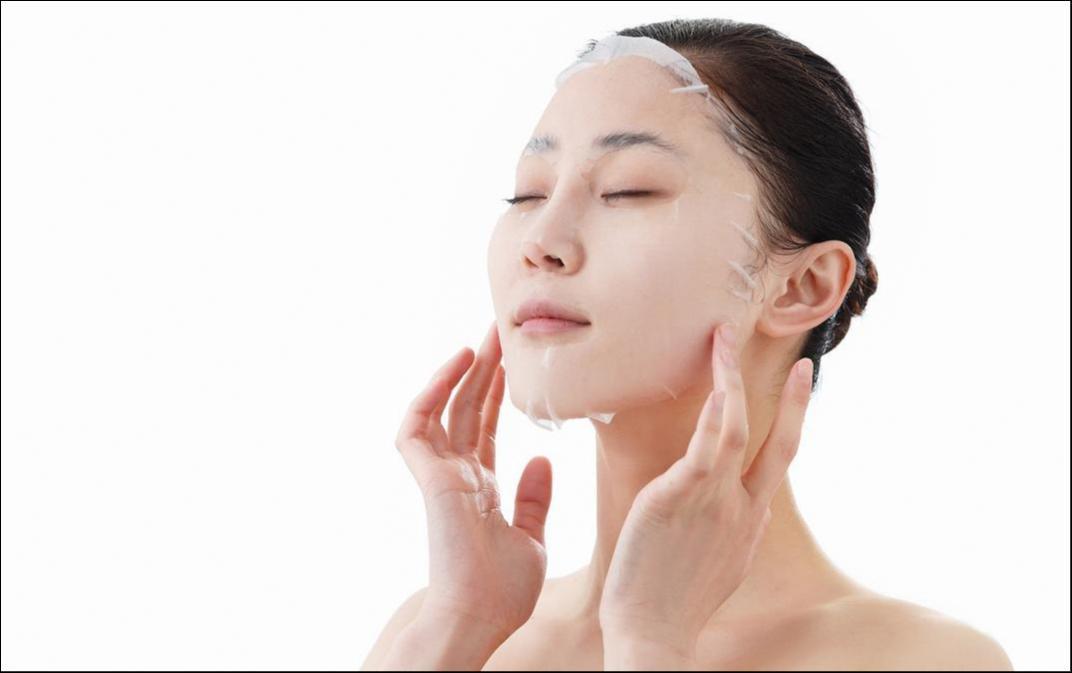
Image source @ vision china
Wen | New Consumption of Tide Watching, Author | Xinyi, Editor | Eucommia ulmoides Oliv.
In recent years, China’s beauty industry has ushered in Shuang Sheng in scale and growth rate, which is an important evidence of the rise of "national tide".
As for the important factors that lead to the rapid rise of many new domestic beauty products in the past few years, based on the supply side, domestic beauty suppliers have served international brands for many years and have accumulated enough experience in technology and mode, and the efficiency of China’s beauty supply chain is leading the world.
Based on the consumption side, the economic situation of the new generation of consumers has improved qualitatively compared with the previous generation, and they also have more time and energy to study and invest in the "beautiful cause".
This is the big background.
Besides, there is a rare opportunity that belongs to China’s beauty industry, which we call the "functional/ingredient era".
When a beauty manufacturer shared it before, it was mentioned that the so-called "function/component" concept was not put forward by a professional research institution in an industry or a so-called core enterprise with the right to speak in the industry, but a concept put forward by the market.
That is to say, consumers "force" the beauty industry to continuously deepen their understanding of functions/ingredients based on their emphasis on functions/ingredients. We seem to have seen the arrival of the "era of consumer sovereignty".
How did this era come about?
We believe that on the one hand, technology itself is improving. People’s pursuit of beauty and health is engraved in their genes, so that the beauty industry has been cracking the password of "eternal youth" through technological innovation for so many years.
With the efforts of the R&D end, the proven more effective raw materials and processes will replace the previous solutions. For example, if we lengthen the time line, we can see that China’s beauty has evolved into a functional era step by step, and the core driving force must be the technology itself.
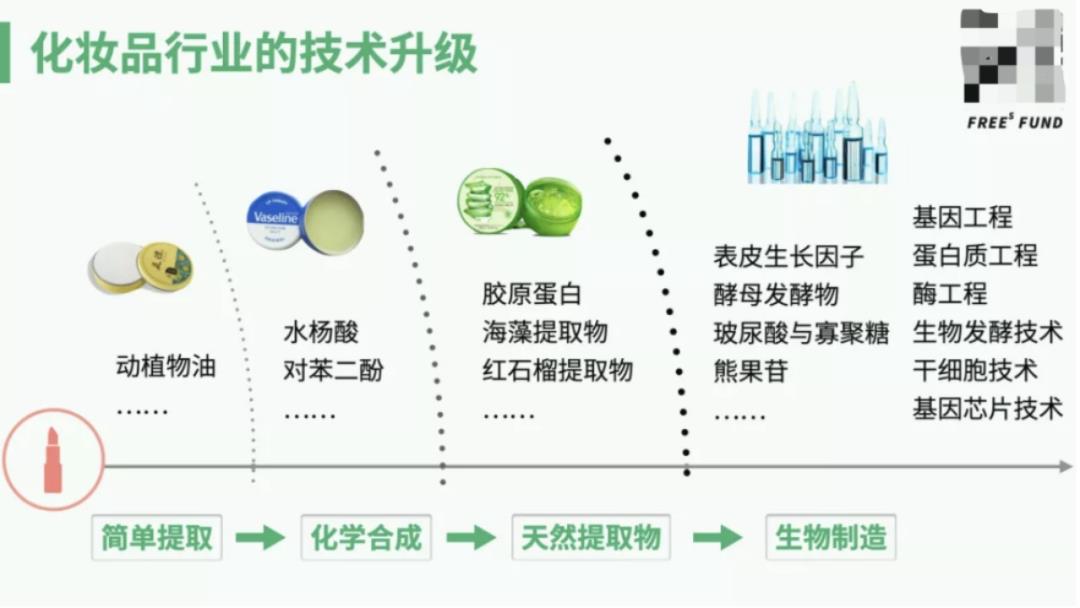
Source: Fengrui Capital
On the other hand, the era of efficacy has become an industry consensus, and it also depends on the rise of social media and corresponding digital means.
With the help of developed information channels, "rich and leisure" consumers have established an unprecedented understanding of beauty products and even the industry. They know exactly what they need and are more capable of judging truly valuable solutions.
Functions/ingredients based on advanced technical capabilities have also become the most recognized beauty concept in the market with the help of new channels.
With the help of new channels and new marketing, an unprecedented high-efficiency bridge has been built between brands and consumer markets, and the efficiency of product market verification has been greatly improved.
Based on the above background, it is not difficult for us to understand the significance of today’s technology to the beauty industry in China. We will also start to sort out and show the scientific and technological innovation of China’s beauty industry around the key words of science and technology.
From the beginning of research and development to the terminal-oriented, the beauty industry relies more and more on scientific and technological strength in each core link. Based on market observation, we summarize the current mainstream technological innovation methods in each link.
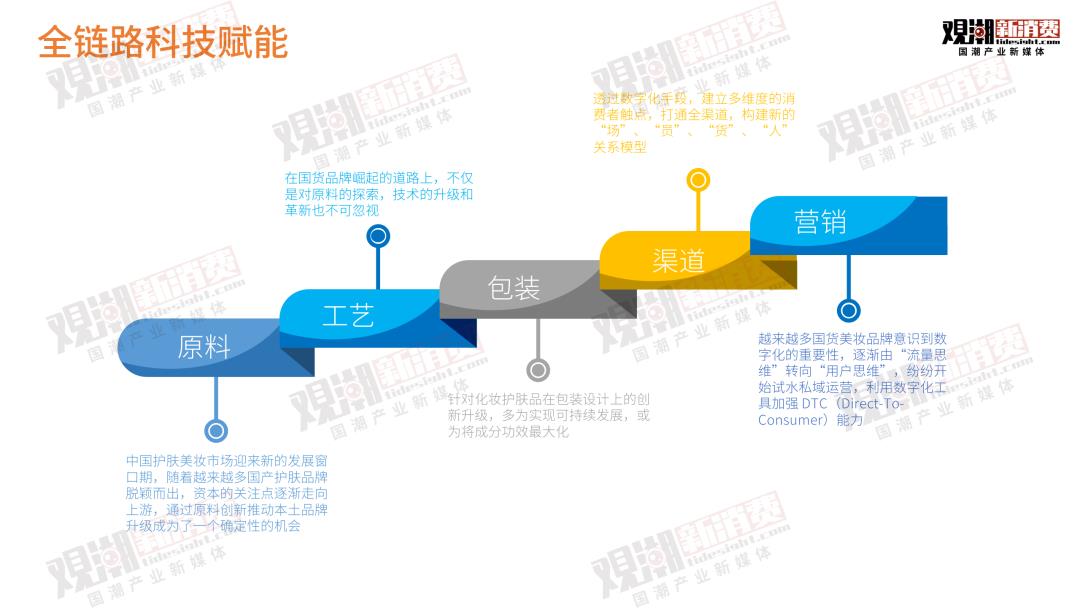
-
The research and development end is mainly the technological innovation of raw materials and processes. From the perspective of raw materials, more and more "local raw materials" are attracting market attention;
-
In the field of packaging, environmentally-friendly packaging materials driven by the concept of sustainable development are becoming the focus of the field. In addition, the technological innovation of packaging is also directly empowering the product itself. For example, through special packaging to maintain the activity of ingredients, reduce the emulsification reaction that may lead to allergies, reduce the irritation of some ingredients, and help control the proportion of ingredients to achieve the best results;
-
At the channel level, no matter which channel the brand is exerting its strength with traffic bonus, digitalization is a technological innovation link that cannot be avoided by reducing costs, improving quality and increasing efficiency. Building a new "people and goods yard" through digitalization is always the goal to be achieved in the process of channel reform;
-
The same is true in marketing. Digitalization makes the connection between channel marketing closer and closer, thus creating an increasingly smooth sales link for the brand. Nowadays, digital marketing tools have almost become the standard of beauty brands, and the essence of tools is to serve efficiency. What we often call "user thinking" is essentially a more efficient content model that links the market.
Here we also show the full-link technology empowerment in the field of beauty through some cases.
In the field of R&D, Galand Group, the parent company of Nature Hall, mainly promotes a kind of "indigenous component", a microbial strain in the Himalayas, which is also a component of the cooperation between Galand and Chinese Academy of Sciences in microbial research.
Now, this ingredient with "anti-oxidation" function has practical product application, and now it is also one of the star products of Nature Hall.
Another typical case of process innovation comes from Zhiben.
No matter how good the ingredients are, if they are not absorbed, the effect will be discounted. Today, an important technological innovation direction in the field of beauty cosmetics is actually to solve the problem of how functional ingredients are used by the human body.
The present technology is called "artificial exosome delivery technology", which can effectively absorb extracellular active ingredients by activating cells and increase the efficacy of the ingredients themselves.
There are also corresponding products on the market.
In the field of packaging, Runbaiyan’s packaging is more representative on the level of sustainable development. At the same time, it has a strong sense of design and recognition, and tells the brand concept through product packaging.
Regarding the following channels and marketing digitalization, here is a marketing link.
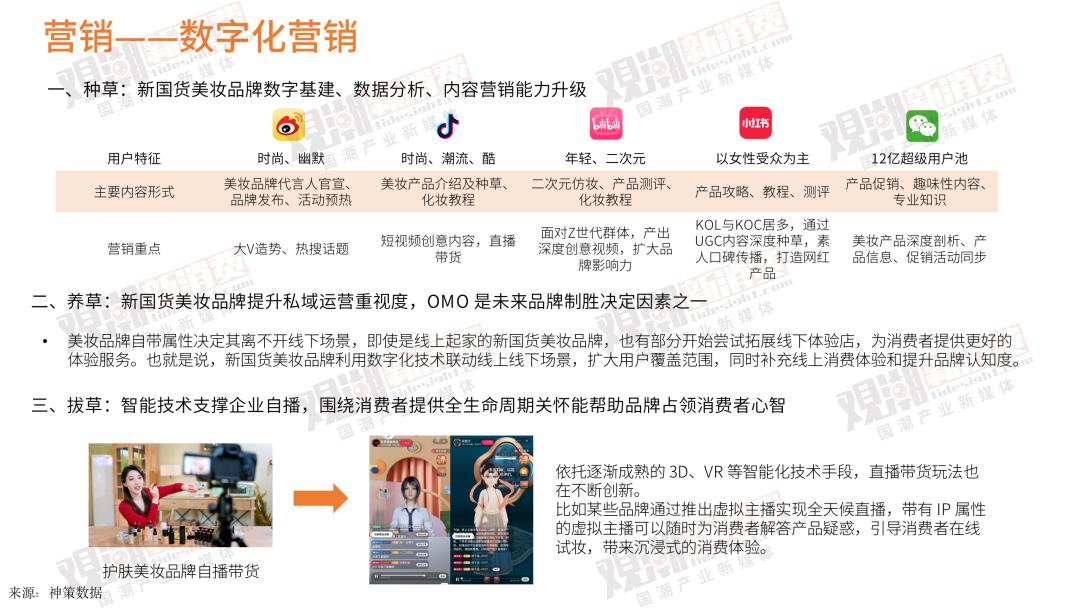
Between planting grass and pulling grass, there is also a link to raise grass, which is also a link to open up online and offline, public and private domains through data, improve the quality of marketing reach in an all-round way, and increase consumer experience.
It shows that in addition to some direct efficiency transformation, we should also add more indirect content to give marketing content and emotional value. And our current digital tools and solutions are indeed more and more intelligent, so high that we can achieve continuous optimization of content through accurate consumer analysis.
The influence of science and technology on the field of beauty is increasing, and this cognition is also reflected in the business process of industries and enterprises through data.
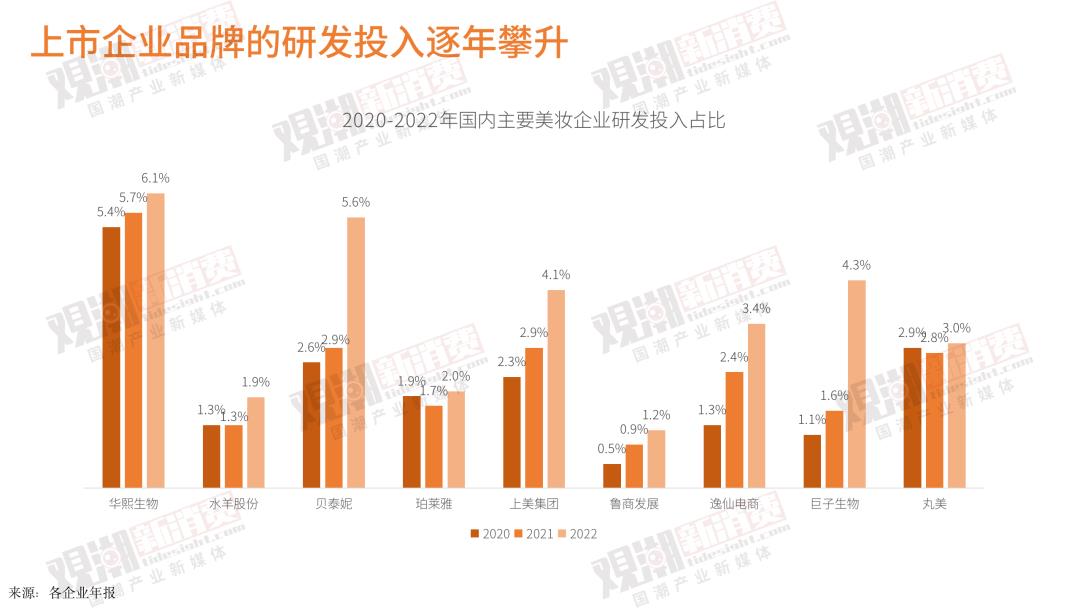
First of all, the proportion of R&D expenses of head beauty enterprises in total revenue has gradually increased in the past three years. Huaxi Bio and Betani are outstanding, with R&D expenses accounting for more than 5% in the past year.
Moreover, not only domestic beauty cosmetics are following the era of technological beauty led by efficacy skin care, but now many foreign brands are also highlighting their scientific research strength and related achievements, fully catering to the efficacy wave.
We have observed that the overall trend in the field of beauty today has changed from "volume marketing" to "volume channel" to "volume research and development" and "volume efficiency".
Show you some typical cases that everyone is familiar with-
The first is Huaxi Bio, which started from the research and development of raw materials. Before that, it was more of a core supply chain enterprise serving the B-end such as medical care and medical beauty. Later, the advantages of raw material research and development and channel funds were expanded, and the beauty brand matrix was developed to play the C-end market and gradually become a terminal brand enterprise; Now Huaxi Bio is a veritable beauty industry chain group enterprise.
Bettini also takes the whole chain route, starting from the conservation planting at the source, integrating R&D and production of brands; Now the product system covers cosmetics and medical devices, and continues to expand in the field of beauty.
These two cases are more focused on the field of skin care products. Cosmetic companies, which have always been regarded as not paying much attention to R&D, are actually gradually consciously raising the threshold of product competition with scientific and technological investment-the parent companies of Perfect Diary and Huaxizi now have their own R&D centers, or do research and development of products with technical content through cooperation with authoritative scientific research institutions.
The direction involved is also inseparable from products and processes. Now many make-up brands are also improving the safety of their products through "local raw materials", creating brand recognition, and even giving make-up products the efficacy of nourishing skin.
Including now, many make-up brands are also making efforts in the field of base makeup, which requires higher research and development, and establishing their own moat through products with thresholds.
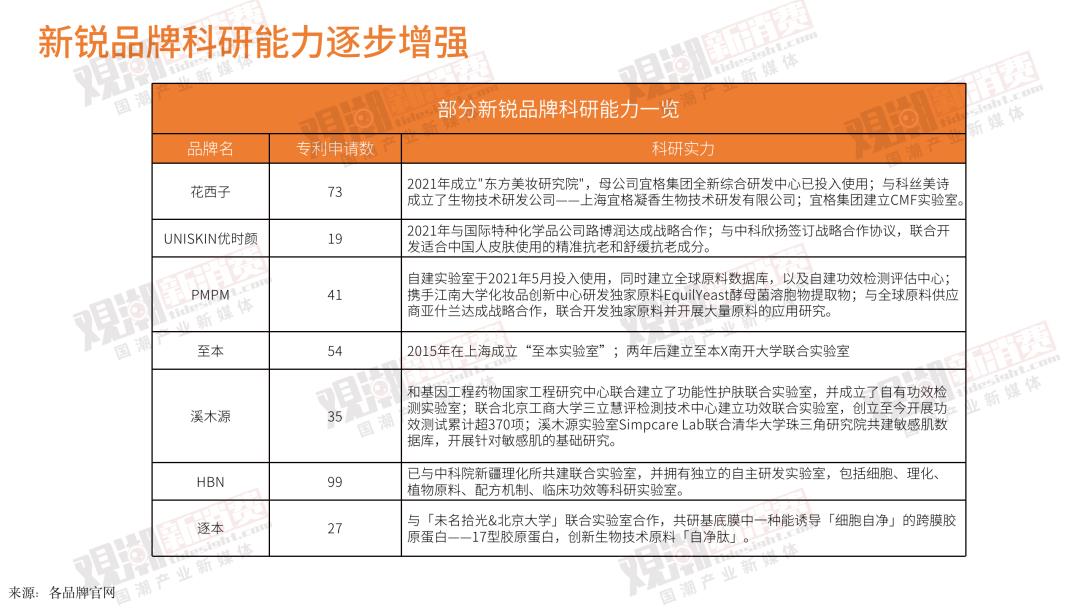
Finally, through a table, I will show you the R&D, construction and related trends of new domestic beauty brands on the market.
Just now, we mentioned that mainstream beauty companies on the market are making efforts in research and development, and also listed relevant data, but in fact, it is difficult for each industry to set a perfect absolute value for R&D investment.
However, the gradual upward trend itself will reflect the positive correlation between R&D investment and the market value of the brand. I believe that it is precisely because of this that the brand has the incentive to continuously increase the price in science and technology.
In the next part, we take this view and show the beauty technology and product direction with high market recognition through some specific cases.
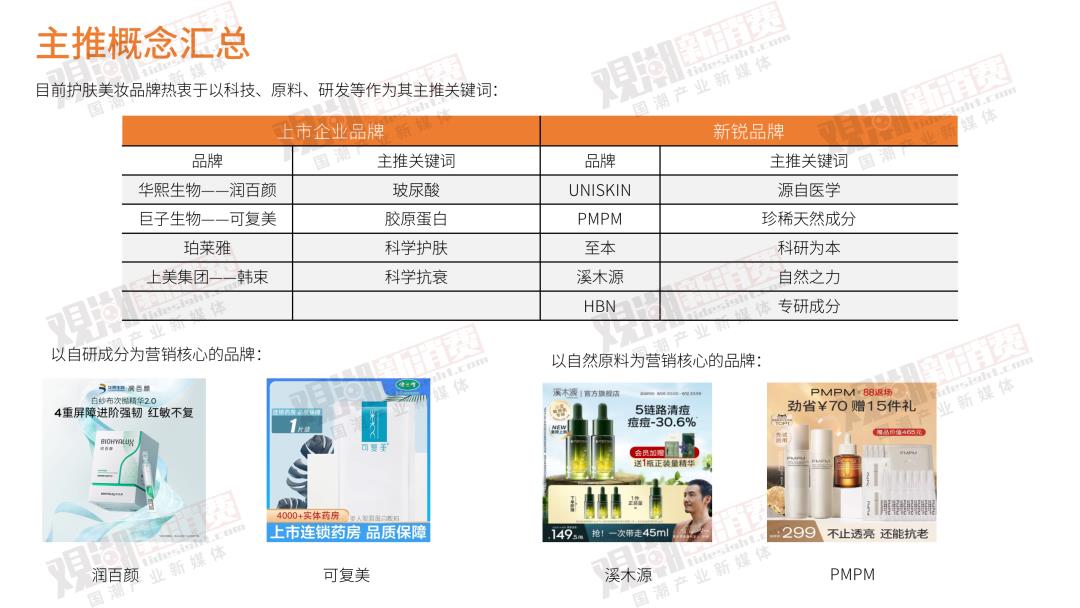
Let me give you a general picture first. This is the main positioning and concept of domestic beauty head brands (including listed companies and cutting-edge brands). Obviously, we can see the weight of scientific research on brands now.

Source: business staff liquid essence category seven-day product ranking
In addition, we also found that more and more products will directly write the ingredients when optimizing the platform keyword search, which actually reflects that consumers’ understanding of beauty technology has reached a certain height today.
Then look at some specific cases-
The first one is hyaluronic acid, represented by "Huaxi School". Here is a direct example of Runbaiyan.
Since its debut, Runbaiyan has been deeply cultivating hyaluronic acid by relying on Huaxi Bio. This year, it directly expressed its brand positioning as "hyaluronic acid technology repair aesthetics", focusing on precise repair of surface, middle and bottom layers.
We also briefly summarized the launch of Runbaiyan on various platforms and the brand word cloud based on the launch, and found that the whole play and positioning of Runbaiyan have a high degree of overlap.
Of course, the core of brand marketing is products. In particular, the brand matrix of Huaxi Bio has always emphasized the concept of "big single product" and advocated that the whole series should be driven by big single product.
Let’s take another example that obviously adopts component positioning, which can be beautiful.
The human-like collagen of giant creatures has a very high reputation in the industrial circle, and it has been named as the original ingredient of China. When doing brand operation, it is also the idea of "core ingredients+efficacy output+big single product". That is, "recombinant collagen+fragile muscle repair+mask, second throw, collagen stick".
We also pulled some data from mainstream platforms to show the product line and sales of Fumei.
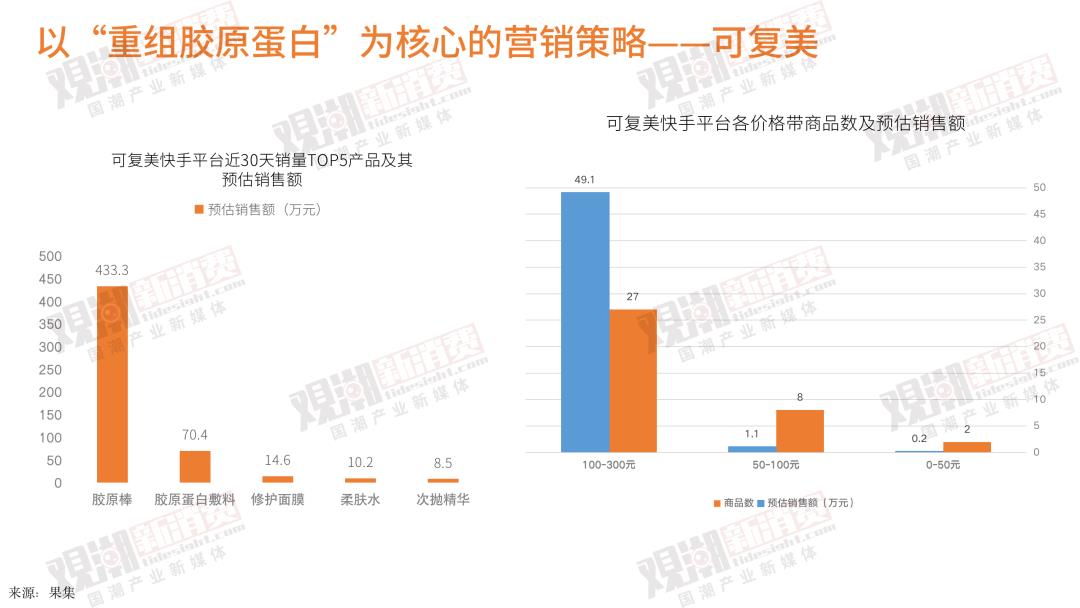
The third case is Ximuyuan, which takes the component route.
When Ximuyuan was first recognized by the market, it was also inseparable from ingredients, but industrial cannabis and medicinal Phellinus linteus finally went wrong for various subjective and objective reasons.
However, Ximuyuan has been building its brand around natural ingredients, and now it mainly promotes the product lines of camellia and cherry blossoms. In fact, camellia is not originated by Ximuyuan, but it does not hinder the positive effect of this ingredient on the brand.
At present, Ximuyuan combines the concept of natural ingredients with urban life from positioning to marketing, which is also the ideological trend that cutting-edge consumer brands in China will generally graft.
Let’s talk about a domestic brand PMPM.
The big move of PMPM this year is to set up a global skin care research expert committee, with the core purpose of "providing solutions to skin problems for consumers in China". The brand has always wanted to promote the concept of "formula", and the formula represents the collection of ingredients and technology.
This is also a case where the brand’s hard scientific research strength is directly presented at the market level.
Finally, I will share this report and show the possible trends from the perspective of our industry.
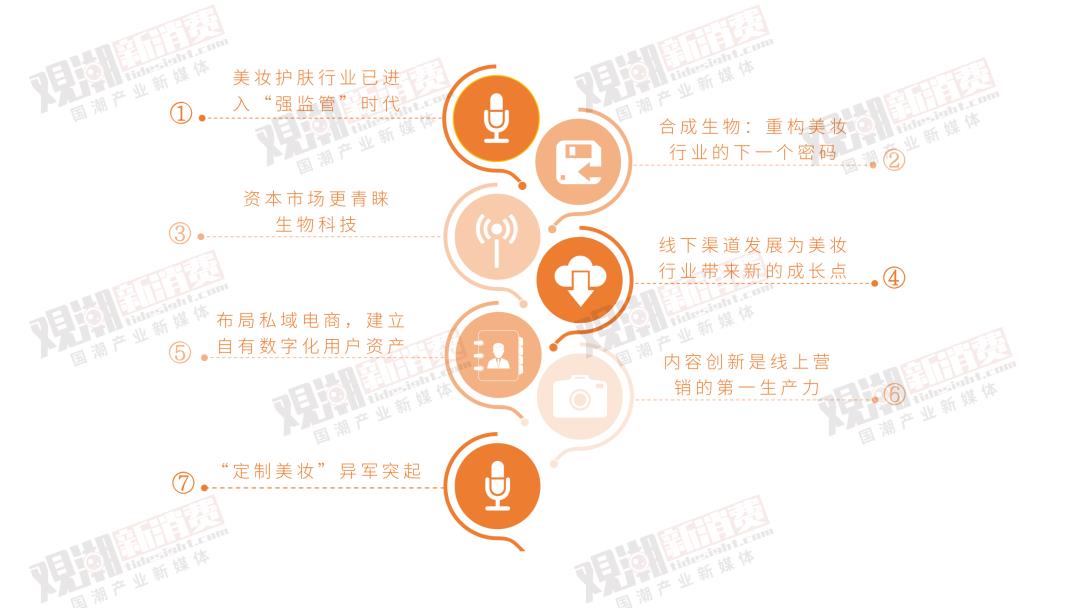
First, the beauty and skin care industry has entered the era of "strong supervision". No matter which industry will pay special attention to policy orientation and industry rules, beauty is actually an industry with a high customer complaint rate, and the impact of policies on brand enterprises is very obvious.
Judging from the adjustment of filing rules in recent years, it can be clearly found that the supervision of the beauty industry has become stricter. Some products can no longer use the expression of "medical" in publicity, which actually puts forward higher requirements for the brand’s product strength.
Since we are in the age of efficacy and benefit from it, we should not abuse it.
Otherwise, the effect will also fail.
Second, synthetic biology: reconstructing the next password of the beauty industry. Brands need to pay attention to some important scientific and technological innovation trends. From the feedback from the current investment market and the mainstream research and development direction of the industry, we conclude that synthetic biology is a research direction that is more concerned in the field of beauty.
Moreover, synthetic biology is also a direction in which China has the first-Mover advantage. At present, China’s synthetic biotechnology is comparable to the international mainstream level, and even in a leading position in some biotechnology fields.
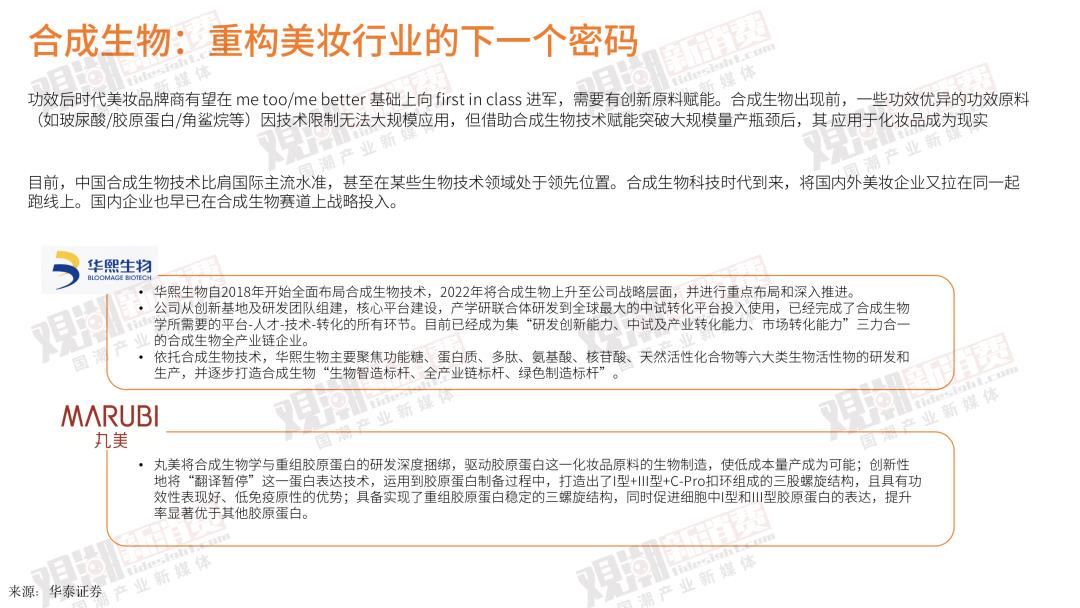
Third, the capital market prefers biotechnology. Take a look at the signals sent by investment institutions. The first is the attention to the field of synthetic biology; Secondly, many investment institutions will favor the proven ingredients and efficacy to increase the certainty of investment; In addition, there are still opportunities for breakthroughs and innovations in sub-populations, scenarios and needs.
Finally, deep brand differentiation based on scientific research and development is the foundation for brand enterprises to impress investors and always stand in the market.
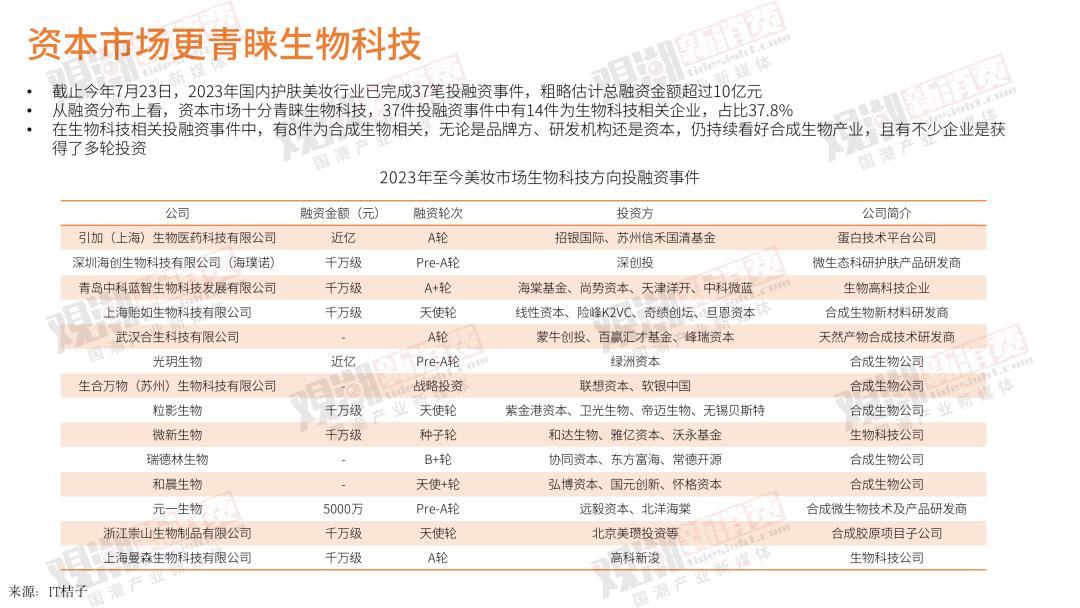
The next three trends are all related to channels and marketing.
Fourth, the development of offline channels has brought new growth points to the beauty industry.
Since the beginning of this year, many beauty brands have begun to work offline. In fact, going offline is the only way for brands to expand their channels. When everyone quickly starts online, whether they have reached the traffic ceiling or not, they will naturally extend offline, because offline service and experience are the core values of beauty brands.
Of course, today’s offline channels need to be upgraded on the basis of traditional shelf thinking, so that offline can become a scene with strong content, multifunction and more experience, which can effectively promote purchase decisions and enhance purchase intentions.
Here, people are no longer simple consumers, but change to accurate consumers; In contrast, brands need to use this scenario to provide more accurate products and services.
And with the empowerment of technology, online and offline will be opened up, resulting in sales linkage. In the future, omni-channel digital empowerment of retail+service+technology+experience is the only way.
Fifth, lay out private domain e-commerce and establish its own digital user assets.
Like the logic under the wire, the public domain leads to the private domain, which is an inevitable brand logic. Under the combined effect of the expensive public domain traffic, limited repurchase rate and emerging platforms and traffic dividends, private domain has almost become the standard for brands to maintain long-term growth.
Moreover, private domain is a channel strategy with compound interest, and the later it is, the higher the production ratio will be, which is also the application meaning of stickiness and repurchase.
Sixth, content innovation is the primary productivity of online marketing of beauty products.
We emphasize that no matter what kind of channels and marketing actions we do, everyone’s requirements for content must be getting higher and higher. The good live performance of Xiaohongshu this year actually confirms the effect of previous content accumulation, and the trust generated by high-quality content in the consumer market has been recognized and highlighted in the form of sales data.
We also advocate that today’s brand enterprises will no longer roughly divide their business into two categories, such as online and offline, public domain and private domain, but focus more on understanding and observing people and refining effective content for real people.
Insight into the output content, content construction experience, experience produces stickiness, and stickiness produces long-term purchasing power; With the help of content and market links, brands will generate new insights under the continuous benign interaction, thus serving the upgrading iteration of the whole business process such as technology, products, content, channels and marketing, and finally making the business form an "organism".
This is a process that takes content as the core driving force and constantly realizes the flywheel of brand growth in the positive cycle.
Seventh, finally, pay attention to a trend, and custom beauty has sprung up everywhere.
Customization is almost a foreseeable end point of all consumption, and customized service reflects the highest degree of respect for consumers. It also reflects the market’s pursuit of in-depth and high-quality services.
It is not easy to find a suitable product and service solution in the vast amount of information. From the industry to the market, people are looking for the next hot trend.
In fact, what is popular is not necessarily suitable.
Of course, thousands of people need not only the input of product technology, the deepening of market education and cognition, but also the more universal and customized solutions that cater to the consumption power of the masses.